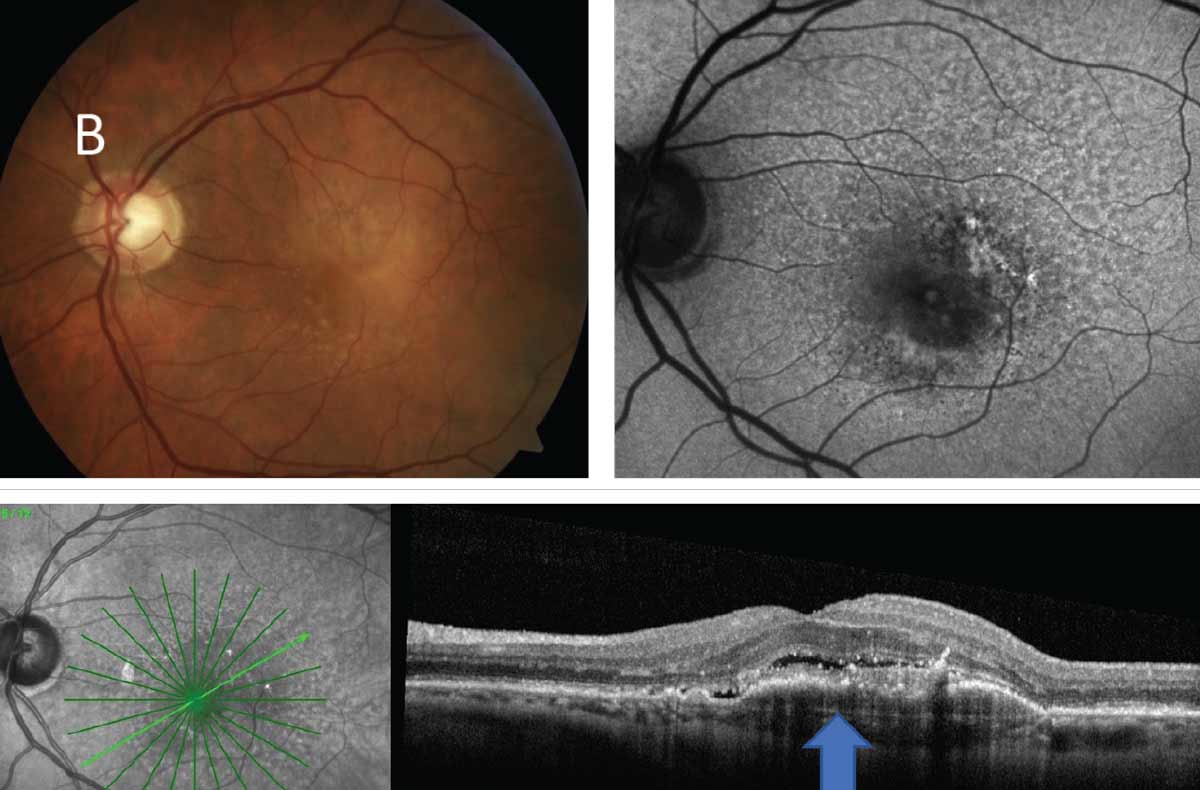 |
| Using home-monitoring vision tests to evaluate disease activity in neovascular AMD could cause active lesions to be missed, as this modality failed to demonstrate satisfactory diagnostic accuracy in a new study. Photo: Mohammad Rafieetary, OD. Click image to enlarge. |
Ocular diseases that require long-term monitoring, such as neovascular age-related macular degeneration (nAMD), increase burden on both patients and the eyecare workforce. The use of home-monitoring technologies is a potential solution that has been gaining popularity in recent years; however, the accuracy of these systems remains under scrutiny. One new study published in JAMA Ophthalmology that looked at the ability of three different home-monitoring tests to detect active nAMD found that none are reliable enough to be used widespread in clinical practice.1
Called the MONARCH study (Monitoring for Neovascular Age-Related Macular Degeneration Reactivation at Home), the investigation involved 297 patients in hospital follow-up clinics who were at least 50 years old and had been receiving nAMD treatment for at least six months but no more than 42 months, with visual acuity no worse than 6/60 on Snellen testing. The three home-monitoring tests evaluated were the KeepSight Journal (KSJ), the MyVisionTrack (mVT) vision-monitoring mobile app and the MultiBit (MBT) app. The KSJ is a paper-based booklet containing near-vision tests, while the mVT and MBT are mobile app-based tests viewed on Apple mobile operating system devices. Participants were asked to complete the tests weekly, and the mean test frequency was three times per month.
The data showed that none of the home-monitoring tests provided satisfactory diagnostic accuracy to identify active nAMD or enable patients to monitor their vision at home. Only the KSJ summary score showed a statistically significant association with lesion activity.
“Implementing any of these evaluated tests, with [eyecare providers] only reviewing test positives, would mean most active lesions were missed, risking unnecessary sight loss,” the researchers argued in their paper.1 They added that while none of the tests seem ready for implementation in a clinical situation, “the findings do support rigorous evaluation of such technologies in the settings and populations for which they are intended before widespread implementation.”1
The author of an invited commentary on the study, also published in JAMA Ophthalmology, expressed his disappointment with these results. He voiced the possibility “that visual-function testing was not the appropriate modality for monitoring anatomic change in the macula in nAMD.”2 One alternative test the commentary cited is the Notal Home OCT device (Notal Vision), which was approved in 2018 and has been shown to be a viable home-monitoring system in nAMD patients undergoing treatment.
“The Diabetic Retinopathy Clinical Research Retina Network recently reported the results of a feasibility trial on treatment-naive patients with nAMD, showing the potential value of this new diagnostic method,” the commentary author wrote, adding that the DRCR Network is also currently enrolling patients for a large trial to compare home OCT to the treat and extend approach. “Perhaps the investigators of the MONARCH study will consider incorporating this technology into their next study protocol,” he noted, before concluding that “home monitoring for retinal diseases to detect clinically relevant changes remains a big homework assignment for investigators.”2
1. Hogg RE, Sivaprasad S, O’Connor S, et al. Home-monitoring vision tests to detect active neovascular age-related macular degeneration. JAMA Ophthalmol. April 20, 2024. [Epub ahead of print]. 2. Blinder KJ. More homework for patients with macular degeneration? JAMA Ophthalmol. April 20, 2024. [Epub ahead of print]. |


